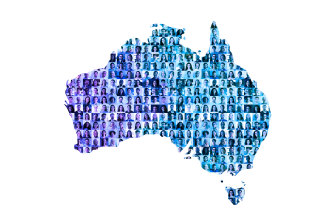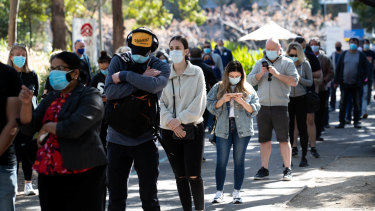Key points
- The first batch of data from the 2021 census will be released on Tuesday.
- The 2021 census was carried out last August, when some parts of the country were locked down because of COVID-19.
- The census provides a detailed snapshot of the community and the data will show the impact of the pandemic on people in Australia.
On a winter evening last August, you or a family member probably would have filled out the 2021 census, along with millions of other people across Australia.
The survey’s questions canvassed everything from living arrangements and household structures to work, education, ancestry, health and more.
The first tranche of census data will be released on Tuesday.
The census is a huge undertaking, and it takes the Australian Bureau of Statistics (ABS) a while to collate the results. It will release the first, and biggest, tranche of data on Tuesday.
What will the census tell us?
This data will give us a snapshot of how many people there are in Australia, where we live and who we are. It will tell us the most common religions, countries of birth, how many people rent, have a mortgage or own their own home, and lots more.
The census is carried out every five years (the previous one was in 2016), and it can be interesting to thread together the data to see how the nation has changed and evolved over the years.
But that is just skimming the surface. It’s possible to drill down into the data by suburb or electorate, or by variables like age group or occupation.
The census is one of the most detailed and interesting data sets I work with, and it has been the foundation of many articles and projects in The Age and Sydney Morning Herald over the years. Using previous censuses, I’ve made maps of the most common countries of birth in each suburb, pinpointed the suburbs people are moving to and moving away from, identified the jobs where people work the longest hours, and tracked the waves of migration Australia has experienced since World War II.
What sets this census apart?
The 2021 census will be especially interesting because it is the COVID-19 census and was carried out when a large proportion of the country was in lockdown.
It will capture what was a time of upheaval for so many people, for years to come, the census will be used in research into the pandemic’s impact on Australia.
People line up at the vaccination hub in Homebush, Sydney, to receive their jabs in August last year.Credit:Janie Barrett
It will be interesting to see what the data shows when it comes to overseas migration to Australia, the impacts on the people’s income and employment status, whether people had moved away from cities to live in regional areas, or whether young adults had moved back into the family home. There has been research into all of these trends but not on the same scale as the census, which essentially collects up the stories of every single person who filled it out.
Back in 2016, there were about 500,000 people who were working from home in the week they filled out the census, or about 5 per cent of the workforce. That percentage will surely be higher in 2021, but we won’t be getting this information on Tuesday. The detailed data on employment, education and how people get to work will come out around October.
What’s new in the 2021 census?
In the 2021 census, a new question was added that asked people to specify whether they had been told by a doctor that they had any long-term health issues, like diabetes, heart disease or a mental health condition.
We will be getting the results for that question on Tuesday, so we will be able to tally up how many people reported at least one such health concern. There has never been a survey of this size or scale into the health of all Australians.
The pandemic, bushfires and uncertainty over the future have weighed heavily on many Australians, and with the renewed focus on mental health, the census results could help identify areas or demographics where a higher percentage of people are facing issues such as depression or anxiety.
What isn’t in the census?
The census collects the responses of everyone who filled out the survey, but the data that is released doesn’t give a summary of individual responses. For example, you wouldn’t be able to find out your neighbour’s income, the amount they pay in rent, the size of their mortgage or any of the information they entered.
The purpose of the census is to provide a snapshot of the community, and one of the reasons it takes almost a year for the results to be released to the public is that the ABS has to make sure the data is de-identified to protect the privacy of everyone who filled it out.
How does the census affect you?
The census isn’t just useful for journalists and data aficionados. Policymakers use it to help make decisions about allocating resources or locating areas of need, businesses use it to identify opportunities and for market research, while academics use it to analyse things such as fertility rates, social disadvantage and housing affordability.
For example, education departments pay close attention to the data on where young families are flocking, so they can work out which areas will need new schools. Electoral boundaries are informed by the census too to make sure that each one has a similar-sized population.
A 2019 report the ABS commissioned into the value of the census found that for every dollar spent carrying out the nationwide survey, $6 of value was generated for the economy from the data’s insights.
The Morning Edition newsletter is our guide to the day’s most important and interesting stories, analysis and insights. Sign up here.
Most Viewed in National
From our partners
Source: Read Full Article


